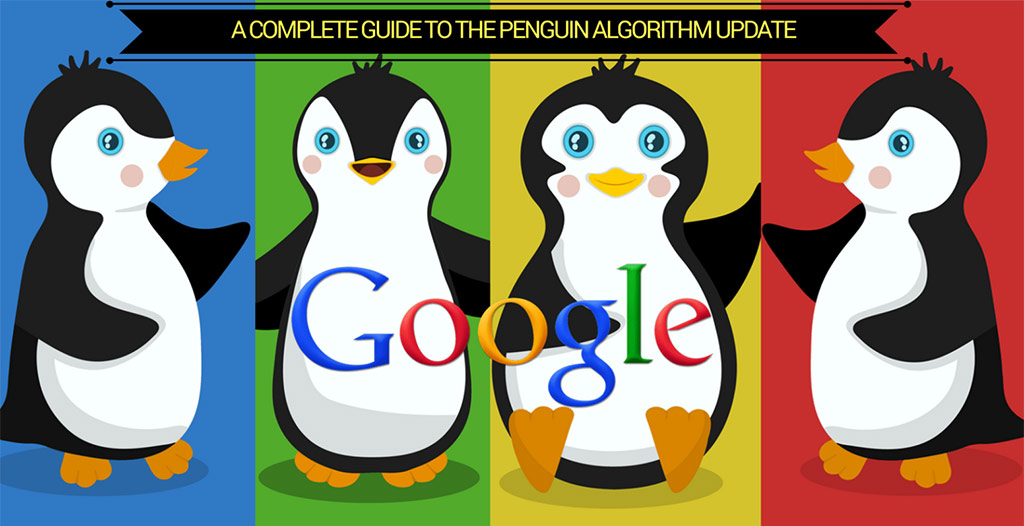Penguin Algorithm
The Penguin Algorithm is Google’s anti-spam algorithm that targets websites that use black hat techniques to manipulate their search engine rankings by buying backlinks.
The algorithm was first introduced in 2012 to combat spammy and low-quality links that violated Google’s Webmaster Guidelines. It was later officially named the Penguin Algorithm in a tweet by Matt Cutts, the former head of Google’s Webspam team. The primary objective of the Penguin Algorithm is to promote high-quality content and discourage the use of manipulative link schemes, which can harm a website’s reputation and rankings. Websites that violate Google’s guidelines risk being penalized or even removed from search results altogether.
 Although the origin of the name “Penguin Algorithm” remains unclear, it is a crucial algorithm in Google’s search engine that aims to prevent sites from using black hat techniques to manipulate search engine results. The algorithm primarily focuses on penalizing websites that use link schemes to artificially boost their rankings.
Although the origin of the name “Penguin Algorithm” remains unclear, it is a crucial algorithm in Google’s search engine that aims to prevent sites from using black hat techniques to manipulate search engine results. The algorithm primarily focuses on penalizing websites that use link schemes to artificially boost their rankings.
What is the Google Penguin algorithm?
The Penguin Algorithm analyzes websites and their backlinks to determine the quality and relevance of the links. Websites that have backlinks from low-quality, spammy websites or irrelevant sources may be penalized by the algorithm. The algorithm also considers the anchor text used in the backlinks and penalizes websites that use exact match anchor text excessively.

The purpose of the Penguin Algorithm is to ensure that search engine results provide the most relevant and high-quality content for users. By penalizing websites that use manipulative tactics to artificially inflate their rankings, the algorithm helps to maintain the integrity of search engine results. It is important for webmasters and website owners to understand the Penguin Algorithm and ensure that their website complies with its guidelines. By creating high-quality content and earning backlinks from relevant and trustworthy sources, websites can improve their search engine rankings without fear of being penalized by the Penguin Algorithm.
What is the main task of the Penguin algorithm?
Penguin Algorithm is Google’s response to using Black Hat SEO and abnormal linking. Matt Cutts had mentioned that in the SMX conference in 2012 as follows:
” We thought how we can fight to low-quality contents and then we introduced the ”Panda Algorithm” to solve this problem. But after that, we noticed that it’s still beginning and yet there are a lot of spam websites; so in order to solve, we designed the penguin algorithm.
Penguin Algorithm is Google’s response to combatting the use of Black Hat SEO techniques and abnormal linking. It was first mentioned by Matt Cutts at the SMX conference in 2012. The algorithm’s primary goal is to reduce the impact of spam and fake links on a website’s search ranking.
If you would like to know everything about Penguin Algorithm, BUY some links.
The algorithm achieves this by analyzing the link-building process and distinguishing between valid and spam links. Initially, the algorithm only focused on incoming links but later expanded to include outbound links and internal linking. Penguin Algorithm penalizes websites that use spam and fake links and downgrades them from top search rankings.
Resolving keyword stuffing problems
The Penguin algorithm checks the website’s linking health and also fights against keyword stuffing. In the past, repeating the same phrase in the content was enough to get a good rank on Google, but this led to an excessive focus on keywords by SEO experts. As a result, keyword stuffing became a Black Hat SEO technique. The Penguin algorithm detects pages that use this technique and penalizes them in search results.
Updates of the Penguin algorithm
The Penguin algorithm, which first started working in 2012, made fundamental changes to search results. According to Google’s official statistics, it had a direct 3 percent effect on search results. The changes to the Penguin algorithm were introduced in phases and subsequent updates had even greater impact. Another important update to the algorithm was released in May 2013, affecting 2.3 percent of search results. Many important updates were made to this algorithm, some of which were not officially introduced by Google. In the following, we will discuss changes and updates to the Penguin algorithm that were officially announced.

1- Updating Penguin Algorithm (1.2) – October 5, 2012
On October 5, 2012, the Google Penguin algorithm was updated and affected the search results in a variety of ways. Until then, only English-language sites were affected by the Penguin.
2- Penguin Changes (Version 2.0) – May 22, 2013
Contrary to previous updates, this update brought about technical changes in the core of the algorithm and affected the impact of the algorithm on the results.
By creating these changes, 2.3 percent of the results were affected. In this algorithm, Google went beyond the home page and major categories of websites and reviewed all pages to find evidence of spam link building.
3- Version 2.1 for quick correction October 2-4, 2013
After update version 2.0, Google decided that more changes were necessary in this algorithm.
This update also affected one percent of the search results.
4- Updating Penguin Algorithm Information (3.0) – October 17, 2014
This time, only changes were made to the Google database and the Penguin algorithm, and although it was described as a major change, no changes were made in the core of this algorithm.
Google has forgiven many of the websites that were redressing their mistakes and returned many of their rankings. According to the usual routine, websites that were left out of Google’s radar were caught in the penguin’s trap using black hat techniques.
5- The last official update (4.0) (after two years – September 23, 2016)
Two years after the release of Penguin algorithm’s version 3, the latest version of the algorithm was introduced, and by submitting this update, the penguin algorithm was added to the core of the Google algorithm. You might expect that the addition of this algorithm to Google’s core would bring significant changes, but in fact, it only changed Google’s view towards the algorithm. With the changes in the latest version of Penguin, Google’s approach towards hacker sites and spammers has changed. From now on, Google typically ignores invalid links and tries to avoid punishing those websites as much as possible.
 Since September 2016, there has never been an official update for the Penguin algorithm. Because of the basic changes in Google’s main algorithm, cross-sectional updates are no longer required; therefore, search results are instantly analyzed and presented.
Since September 2016, there has never been an official update for the Penguin algorithm. Because of the basic changes in Google’s main algorithm, cross-sectional updates are no longer required; therefore, search results are instantly analyzed and presented.
Is it possible to regain ranking?
In some cases, even after the webmasters cleaned spam links, they did not gain their previous Google ranking prior to this update. There may be many factors behind this, for example:
- Traffic and rankings have been generally invalid and have been obtained through suspicious backlinks.
- When previous links have been removed, there has been no attempt in order to earn valuable and natural links.
- No negative backlinks have been removed or spam links have been eliminated insufficiently.
- The problem in general may not be caused by spam links.
When you get Google forgiveness and Google is starting to rebuild your ranking, you should not expect to go back to your former position. You may have earned a good position due to the purchase of suspicious links; therefore, you should not expect to return to the top positions even if you have been forgiven.
 One of the problems that occurred to site owners was that it was difficult to evaluate the links and therefore they had to disable all of their links. As a result, many of the valuable links in websites that had helped earn a place also disappeared.
One of the problems that occurred to site owners was that it was difficult to evaluate the links and therefore they had to disable all of their links. As a result, many of the valuable links in websites that had helped earn a place also disappeared.
Common mistakes about Google’s Penguin algorithm
One of the interesting things about SEO knowledge is that there are always new assumptions and tests about it (from non-authoritative sources), which led to a lot of mistakes about Google’s algorithms. Here are some common mistakes we are going to review about the penguin algorithm.
1- Is the penguin a penalty?
One of the biggest misconceptions about the Penguin algorithm is that it is often referred to as a “Penguin Penalty”. However, this is not accurate as Penguin is actually a part of the main core of Google’s algorithm.
2- Will Google notify you if the site is penalized?
A common misconception about the penguin algorithm is that Google will notify you if it penalizes your website. However, this is not the case. The Google search console, which is the only means of communication with Google, does not provide any specific reasons for the drop in your ranking due to Penguin algorithm actions.
3- Is disavowing malicious links the only way to get rid of the penalty?
Although using the disavow tool can help eliminate many of your harmful and malicious links, it’s important to note that regaining Google’s trust can be a time-consuming and costly process.
It’s important to have a high ratio of good quality links against malicious links and spams.
So, you do not need to focus all of your attention on removing malicious links, it’s better to get legitimate links at the same time. This will probably help increase Google’s trust in your website and return to your previous ranking faster.
4- Is it impossible to get rid of the Penguin penalty?
This is a completely incorrect assumption. Although it can be time-consuming to recover from a penalty, it is possible to get the Penguin algorithm to forgive you if you handle it properly. One effective approach is to use the Disavow tool in the Google Search Console panel to remove malicious and low-quality links and obtain high-quality, trusted links.


